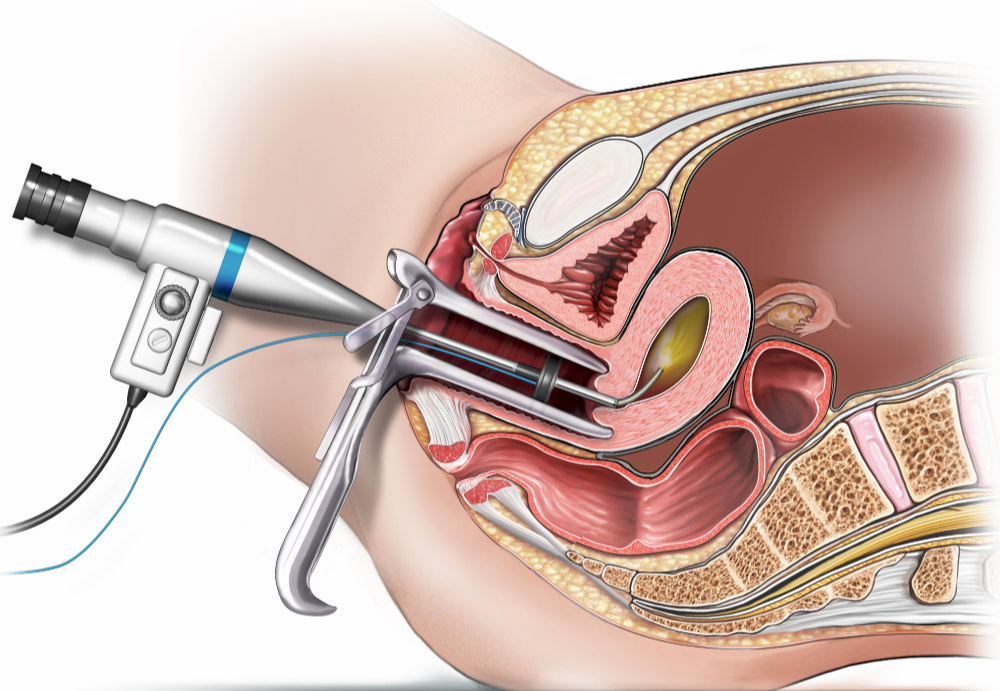Enquire Now
A hysterectomy is a surgical procedure in which the uterus (womb) is remove from a woman’s body. In some cases, the procedure may also involve the removal of the cervix, ovaries, and fallopian tubes, depending on the specific circumstances and the type of hysterectomy performe. Visit Our Clinic Or more info contact us! Hysterectomies are one of the most common surgical procedures performe on women.
Hysterectomies are performe for various medical reasons, and the type of hysterectomy chosen depends on the underlying condition and the patient’s overall health.
Uterine Fibroids: Large or symptomatic fibroids (noncancerous growths in the uterus) that cause pain, heavy bleeding, or other complications.
Endometriosis: Severe endometriosis that has not respond to other treatments and is causing pain or fertility issues.

There are three main types of hysterectomy:
Total Hysterectomy: In a total hysterectomy, both the uterus and cervix are remove. This is the most common type of hysterectomy.
Partial Hysterectomy (Supracervical or subtotal hysterectomy): In a partial hysterectomy, only the upper part of the uterus is remove, leaving the cervix in place. This type of hysterectomy is less common and may be consider in certain situations.
Radical Hysterectomy: A radical hysterectomy is typically perform when there is a diagnosis of gynecological cancer, particularly cervical cancer. It involves the removal of the uterus, cervix, the upper part of the vagina, and the surrounding tissues, including lymph nodes.
What happens during a hysteroscopy?
Preparation: Before the procedure, you may be given a sedative or a local anesthetic to help you relax and reduce discomfort. Sometimes, a dilating agent may be use to widen the cervix slightly.
Positioning: You will be positione on an examination table, similar to a pelvic exam, with your feet in stirrups.
Insertion of Hysteroscope: The hysteroscope is a thin, flexible tube with a light and a camera on the end. It is insert through the cervix and into the uterus. In some cases, a liquid or gas, such as carbon dioxide or saline solution, may be use to expand the uterus, allowing better visualization.
Visualization: The camera on the hysteroscope allows the doctor to view the inside of the uterus on a monitor. This real-time visualization helps the healthcare provider identify any abnormalities or issues.
Diagnostic or Therapeutic Procedures: Depending on the purpose of the hysteroscopy, various procedures can be perform during the examination. These may include:
- Diagnostic Hysteroscopy: The doctor may simply look for any abnormalities or take tissue samples (biopsies) for further analysis.
- Operative Hysteroscopy: If an issue is identify, the doctor may perform minor surgical procedures, such as removing polyps, fibroids, or other abnormal tissue. This can often be done with specialize instruments pass through the hysteroscope.
Why Choose Dr. Sanjana Sainani for Hysteroscopy in Nagpur?
Expertise: With years of experience in gynecological procedures, Dr. Sanjana Sainani is a highly skill hysteroscopy surgeon in Nagpur. Their expertise ensures precision and thoroughness in diagnosing and treating various uterine conditions.
State-of-the-Art Facility: Our clinic is equipp with advance technology to perform hysteroscopy procedures with the utmost accuracy. Dr. Sanjana Sainani utilizes cutting-edge tools and equipment to provide comprehensive care to every patient.
Personalize Patient Care: At the Women & Child Care clinic, we understand that each patient is unique. Our personalize approach to care ensures that your specific needs are met, and you receive the attention and support require throughout the entire hysteroscopy process.
Comprehensive Services: Whether you require diagnostic hysteroscopy or hysteroscopic surgery, Dr. Sanjana Sainani offers a wide range of services tailore to meet your individual health goals. From identifying and treating abnormalities to ensuring your overall gynecological well-being, we are committe to comprehensive care.
surgical approaches
Abdominal Hysterectomy: The uterus is remove through an incision made in the abdominal wall. This approach may be chosen for larger uterine sizes, when other organs need examination, or due to certain medical conditions.
Vaginal Hysterectomy: The uterus is remove through the vaginal canal without external incisions. This approach typically results in a shorter recovery time and fewer complications compare to abdominal hysterectomy.
Laparoscopic or Minimally Invasive Hysterectomy: This involves using small incisions and specialize instruments to remove the uterus. It can be done either as a laparoscopic-assist vaginal hysterectomy (LAVH) or as a total laparoscopic hysterectomy (TLH). Minimally invasive approaches often result in shorter hospital stays, faster recovery, and less scarring compare to traditional abdominal surgery.
various medical reasons
Uterine Prolapse: When the uterus descends into the vaginal canal or outside the body due to weaken pelvic floor muscles.
Uterine Cancer: In cases of uterine or cervical cancer, a hysterectomy may be part of the treatment plan.
Chronic Pelvic Pain: In some cases of unexplain chronic pelvic pain when other treatments have not been effective.
Adenomyosis: A condition where the tissue lining the uterus grows into the uterine muscle, causing pain and heavy bleeding.
